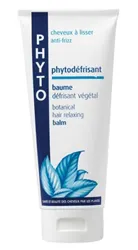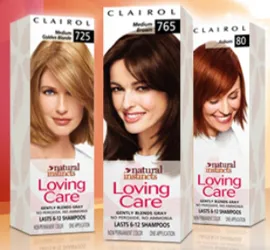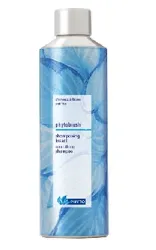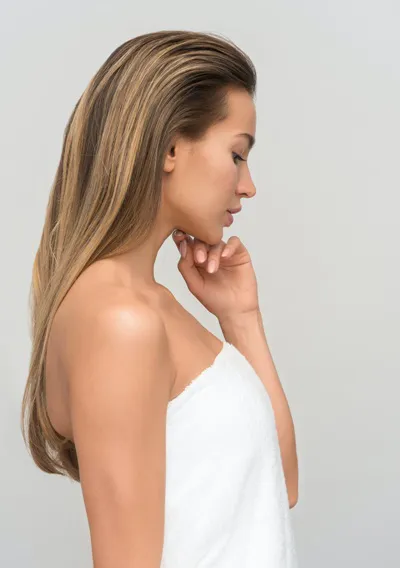
All Natural Botanical Shampoo With Minimal Toxins
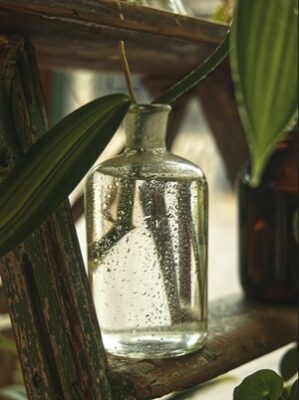 IHerbal Formula - Image by gryffyn m - Unsplash
IHerbal Formula - Image by gryffyn m - UnsplashAlthough it's a matter of ongoing controversy, shampoo can't effectively block DHT.
As a result, it can't help with female (or male) pattern hair loss (FPHL).
Can A Hair Loss Shampoo Effectively Block DHT?
If you're wondering why your hair loss shampoo can't effectively block DHT or can’t it help with female pattern hair loss, keep reading.
The reality is quite simple.
The shampoo has minimal contact period with the scalp, roots, and hair follicles.
No shampoo formula has enough scalp time to stimulate hair growth or prevent hair loss.
Many dermatologists and hair loss physicians agree.
Hair Loss Shampoo Doesn't Remain On Hair Long Enough To Make A Major Difference
 Cleansing Hair - Erick Larregui on Unsplash
Cleansing Hair - Erick Larregui on UnsplashHair loss shampoo is only effective if you have a severe hair loss triggering scalp condition.
Those conditions might include fungus (ringworm), seborrheic dermatitis (dandruff), or psoriasis.
With those two conditions, you might be losing hair due to inflammation.
A hair loss shampoo may help reduce scalp conditions, but long term, it's not an effective hair loss treatment for female (or male) pattern baldness.
Soapwort Herbal Shampoo
The soapwort herbal shampoo is a Do-It-Yourself (DIY) cleansing formula that contains no sulfates or other potentially toxic chemicals.
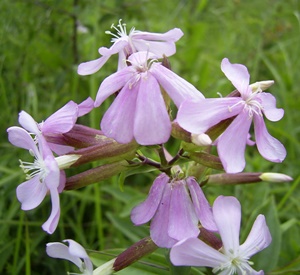 Soapwort - Saponaria-officinalis-flower - Wikipedia
Soapwort - Saponaria-officinalis-flower - WikipediaSoapwort is a very fragrant and stimulating herb When applied to your scalp. It may help prevent dandruff, and it's thought to promote hair growth.
Other common names for Soapwort include crow soap, wild sweet William, and soapweed.
Ingredients
Take 1 cup of each of the following fresh organic herbs:
Nettle - Known as urtica dioica. It's believed to combat DHT and inflammation. Two known causes of hair loss.
Spearmint - There are indications that the use of a spearmint supplement can treat hair loss caused by Androgenetic Alopecia (AGA).Select Rosemary for dark hair (it may darken light hair) - An anti-inflammatory, it's used for [preventing hair loss] and regrowth.
or
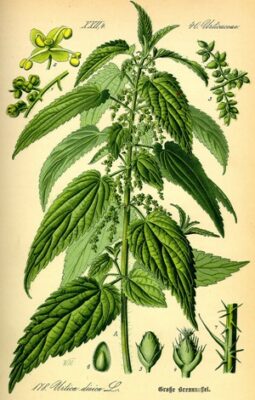 Stinging Nettle - Illustration by Otto Wilhelm Thomé (1885)
Stinging Nettle - Illustration by Otto Wilhelm Thomé (1885)Select Chamomile for lighter hair - Chamomile tea contains chemical compounds that may reduce inflammation, a cause of hair loss.
Two handfuls of soapwort - Soapwort (Saponaria officinalis L.) can be found in pastures. It's a plant native to Europe and from Asia to western Siberia.
It grows in cool places at low or moderate elevations. Soapwort is also known as crow soap, wild sweet William, and soapweed.
Optional - Essential Oils
A few studies show both essential oils may promote hair growth and prevent thinning.
Use 1-2 drops of your desired aroma or mix them.
Directions
In a medium-sized glass or ceramic saucepan, combine the cups of nettle, spearmint, and rosemary (or chamomile).
Note: Avoid using use metal pans.
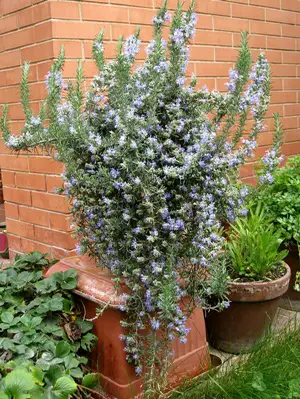 Rosemary - S. rosmarinus 'Prostratus'
Rosemary - S. rosmarinus 'Prostratus'Cover all the herbs with water.
Bring water to a boil.Boil the herbs until they reduce down, and the formulation equals approximately two cups of liquid.
Turn off the heat, cover the pan and let herbs slowly steep for at least 2 hours.
Strain the herbs from the liquid with a fine strainer. The remaining liquid will be very dark brown.
Leave the herbal liquid in the glass pan.
Second Part Of The Mixing
Mix with the following herbal shampoo liquids:
Add two handfuls of soapwort to the glass pan containing the strained liquid.
Pour 1 to 1 1/2 cups of water over the brown liquid mixture.
Bring the combination of the brown liquid + the soapwort and the newly added water to a boil.Lower the heat and simmer for 10 minutes.
Don't let the liquid burn.Turn off the heat completely.
Cover the pan and let it steep until cool.Strain the nettle, rosemary (or chamomile), spearmint, and soapwort into a glass bottle that closes tightly.
 Chamomile - Roman chamomile, Chamaemelum nobile
Chamomile - Roman chamomile, Chamaemelum nobileLet the liquid infuse overnight.
How To Use Formulas As A Shampoo
Pour the cleansing formula into a suitable shampoo bottle.
Add 1-4 drops of essential oils of your choice. Make sure to use authentic essential oils, not synthetic ones.
Shake Before Using as Your All Natural Herbal Shampoo
Get your detangled hair (detangle before getting in the shower) super-soaked with lukewarm (never hot) water.
This all-natural soapwort botanical shampoo formula won't give you a head full of suds like a commercial brand. That's because it doesn't have sudsing chemicals.
That's good news since suds-inducing chemicals can be potentially toxic.
Even though the shampoo is all-natural and doesn't foam up, the cleansing results are undeniable.
Although this formula is not taken internally, if you have known allergies to herbs or soapwort, skip the recipe.
When in doubt, consult with your health care physician. Similarly to any other herbal remedy, it is not safe for everyone.
It Won't Stop Hair Loss, But It Will Minimize Chemical Exposure
 Spearmint in Bangladesh
Spearmint in BangladeshIf you want an all-natural botanical shampoo with minimal toxins, consider whipping up a batch of this DIY herbal shampoo.
It won't necessarily stop your hair loss.
In fact, it probably won't. It has limited scalp exposure. But it has no chemicals.
Summary
Many dermatologists and hair loss experts have suggested that sulfates and other shampoo chemicals may trigger hair loss.
Of course, that is not true for all people all the time. Being safe is better than sorry.
I always dilute my shampoo to 1/8th teaspoon mixed into a gallon of lukewarm water.
Get enough cleansing power without unnecessary exposure to sulfates.
Use this shampoo, either diluted or full-strength.
Best wishesSocial Media Network Information
Please follow us on Twitter at: https://Twitter.com/HairBoutique. I look forward to meeting new people from all walks of Twitter and learning from their Tweets.




